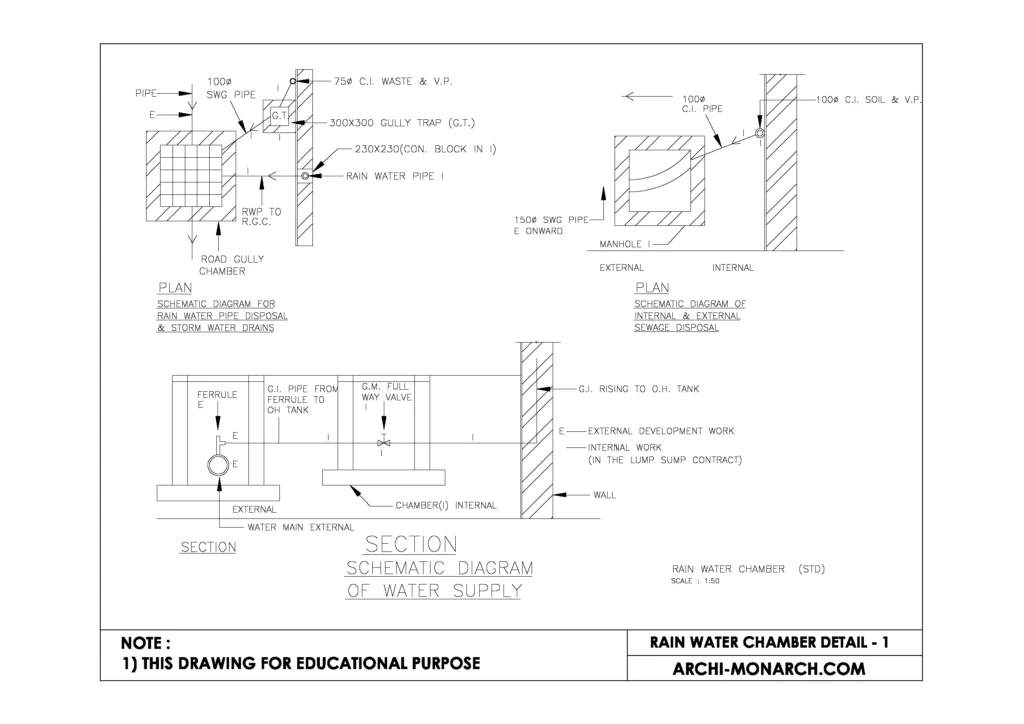A rainwater chamber is a structure designed to capture and store rainwater for later use. It is often used to collect and store rainwater that falls on rooftops or other surfaces to be used for irrigation, landscaping, or other purposes.
Rainwater chambers can be made from a variety of materials, including concrete, plastic, or metal, and can be buried underground or built above ground.
They are typically designed with a sloping roof or other feature to channel rainwater into the chamber, and may also have a filter or other device to remove debris and contaminants from the collected water. Some rainwater chambers also have pumps or other devices to facilitate the distribution of the collected water for use.
If you want to know about the kitchen detail or miscellaneous detail or water tank detail, please click the link above.
Image of rainwater chamber detail and downloadable (in DWG) link below

Rain water chamber detail drawing – 1
A rainwater chamber is a type of underground structure that is designed to collect and store rainwater that falls on a building or site. It is typically located below ground level, and is connected to the building’s roof or other surface area where rainwater can be collected.
The design of a rainwater chamber will vary depending on the specific requirements of the site and the intended use of the collected rainwater. However, some common features that may be included in a rainwater chamber are:
- Inlet pipes: These pipes are used to bring rainwater into the chamber from the roof or other surface areas. They may be equipped with screens or filters to prevent debris from entering the chamber.
- Outlet pipes: These pipes are used to drain the collected rainwater from the chamber. They may be connected to a drainage system, a cistern, or other storage system.
- Overflow pipe: This pipe is used to prevent the chamber from overflowing if the volume of collected rainwater exceeds its capacity. The overflow pipe is typically connected to a drainage system or other outlet.
- Access hatch: This is an opening in the chamber that allows for access to the inside for maintenance and inspection purposes.
- Ventilation: Ventilation is important to prevent the chamber from becoming damp or stagnant. Ventilation may be provided by natural air flow or through the use of mechanical ventilation systems.
A rainwater chamber may also be equipped with additional features such as pumps, controls, and sensors to facilitate the collection and use of the collected rainwater.
Our tips to help you improve your architectural rainwater chamber detailing.
